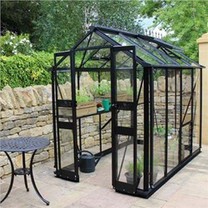Glasshouse Applications: Diverse uses from agriculture to research and education
The glass greenhouse is a light steel structure building of a facility, usually composed of hot-dip galvanized steel, sprayed plastic skeleton and glass and other accessories. The main purpose of a glass greenhouse is to create a microclimate similar to the natural environment, so that plants can grow and reproduce in different seasons of the year. Glass greenhouses are available in different shapes, sizes and designs to suit different uses and needs.
The following is a detailed description about the different applications of glass greenhouses:
Agricultural applications:
Glass greenhouses are the most widely used in the agricultural field. They can help farmers extend the growing season and create a stable climate that improves crop yields and quality. By controlling parameters such as temperature, humidity, and light, a glass greenhouse can create an ideal environment for plant growth and development, allowing plants to grow at any time and reproduce for the desired time. Common crops grown in greenhouses include vegetables, fruits, flowers and ornamental plants. Additionally, greenhouses can be used to grow saplings, flowers, and other plants for cultivation outside.

Research application:
Glass greenhouses are also widely used in the fields of botany and agricultural research. By controlling parameters such as temperature, humidity, light and nutrients, researchers can precisely control environmental conditions and study plant growth and development under different environmental conditions. Greenhouses provide a stable environment that allows researchers to conduct more detailed and accurate studies of plant growth and development. In addition, glass greenhouses can also be used to research and develop new agricultural technologies to improve crop yield and quality.

Educational application:
Glasshouses can also be used for educational purposes. Educators can conduct demonstrations of plant growth in a greenhouse, introducing students to the fundamentals and processes of plant growth, and allowing students to learn how to manipulate the environment to promote plant growth. In addition, greenhouses can also be used to teach courses such as ecology and environmental science, so that students understand the relationship between plants and the environment, and learn how to protect the environment and promote sustainable agricultural practices.
Vacation and Travel Apps:
Glasshouses can also serve as vacation and tourist destinations. In some resorts and tourist attractions, glass greenhouses are used to create an indoor garden or farm environment, allowing visitors to enjoy various plants and flowers indoors. In addition, the glass greenhouse can also be used as a venue for weddings and other events, providing people with a unique and romantic environment.

Entertainment application:
The glass greenhouse can also be used as an entertainment facility. In some commercial centers and shopping malls, glass greenhouses are used to create a unique shopping environment where tourists can shop, taste food, party and socialize. In addition, the glass greenhouse can also be used for cultural events such as exhibitions and art events.

Glass greenhouses have a wide range of applications, ranging from agricultural production to research and education, to tourism and entertainment. With the continuous development and innovation of technology, the application field of glass greenhouse will continue to expand and deepen.






